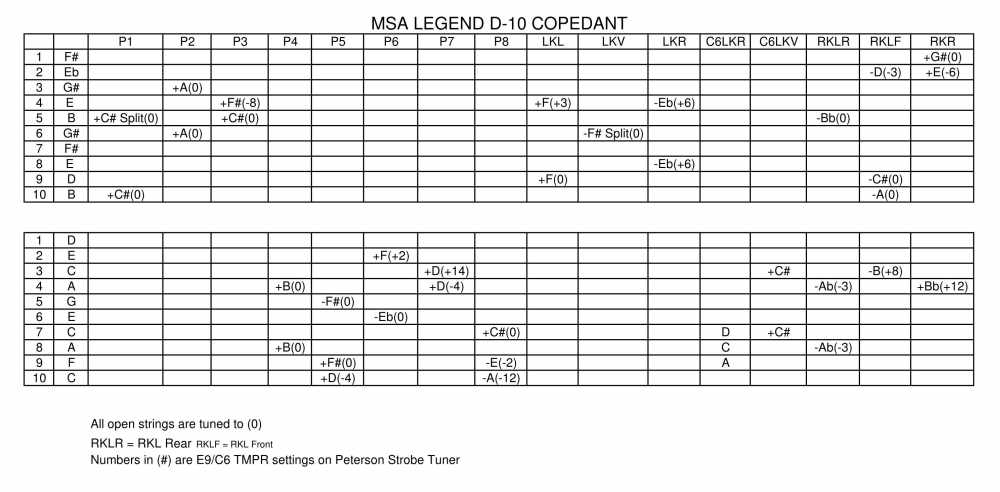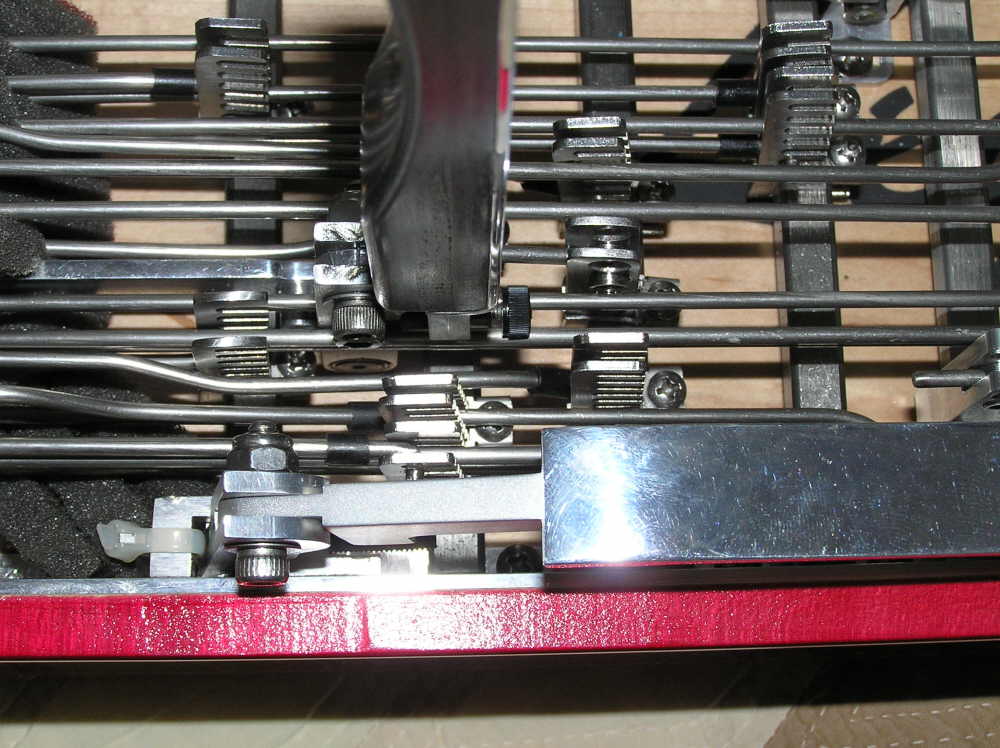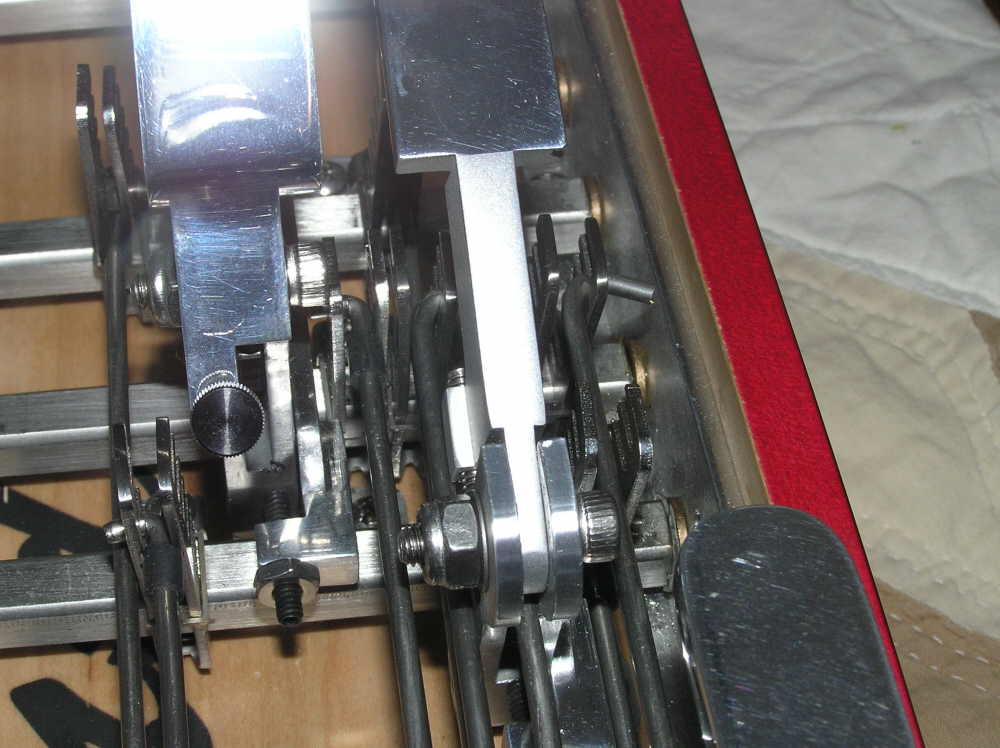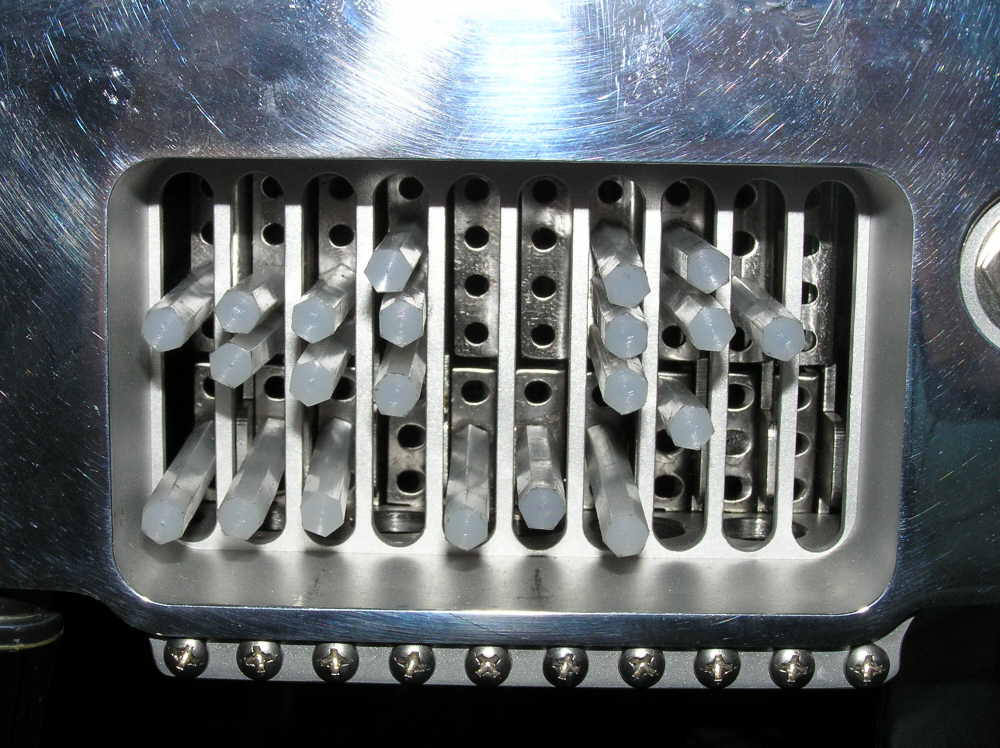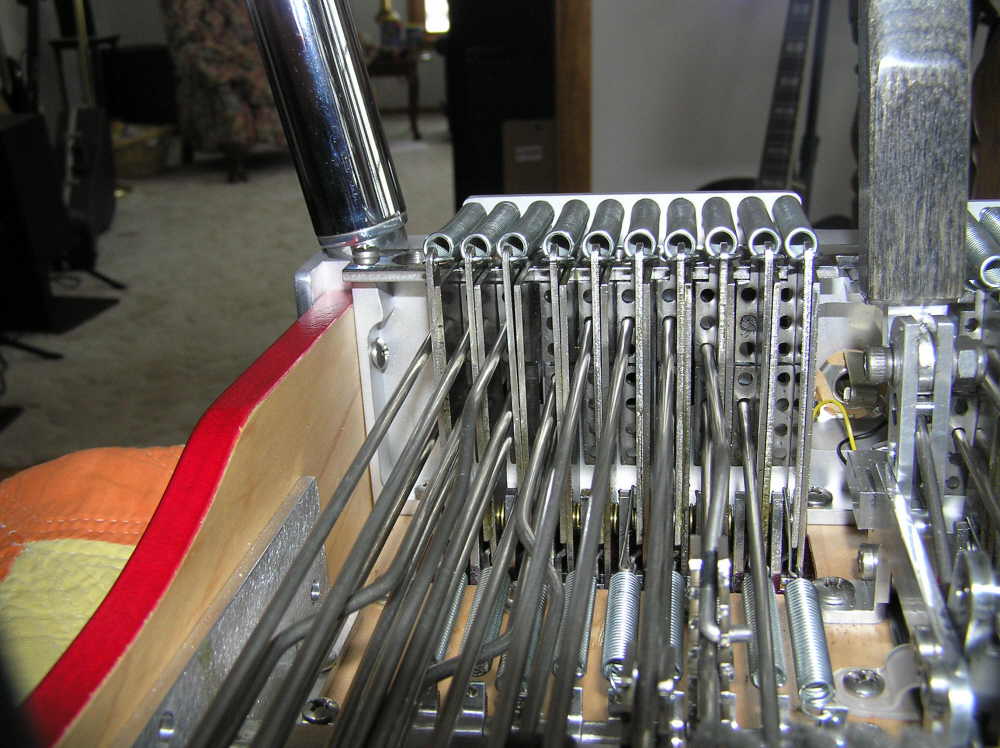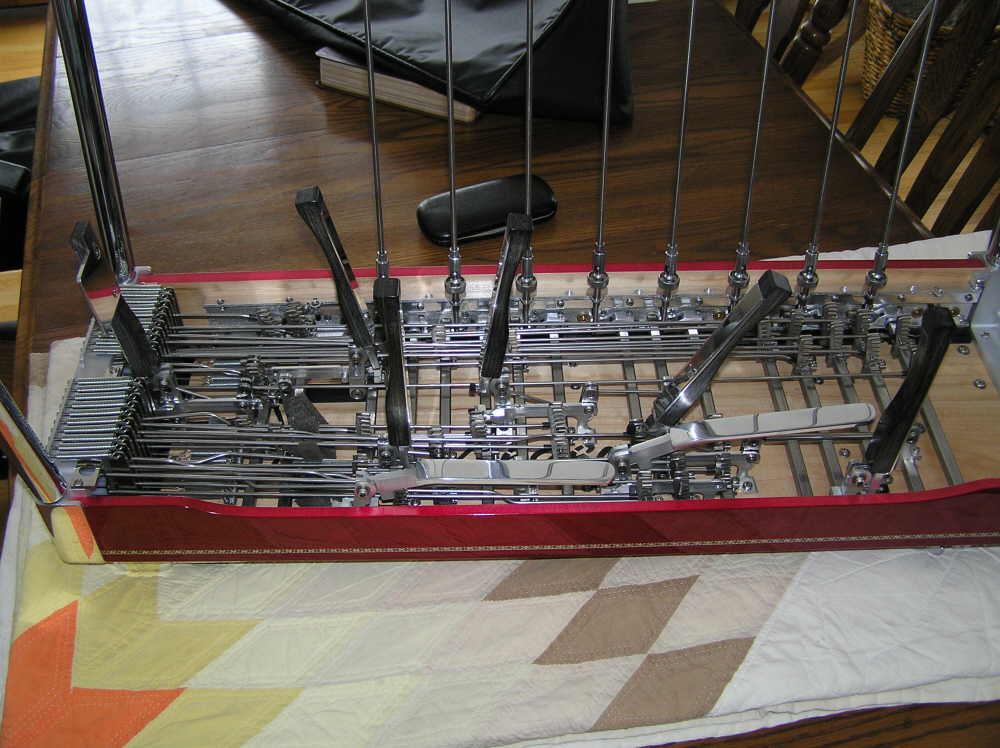|
This page is devoted to the C6th change denoted as "C6LKR" on the copendant chart below. Basically this inserts a "D" or 9th
note into the middle of the tuning. If you want to experiment with this, just tune your open C6th tuning to D,E,C,A,G,E,D,C,A,C
and you can try out some of the tab here. With the D note in the middle. a lot of single string licks become easier to play and
there's even a few pedal changes that work between this change and other pedals. Note that some steel players have adopted this
change permanently into their basic C6th tuning using open strings: D,E,C,A,G,E,D,C,A,F, dropping the bottom C string!
I will start by showing my current copedant. The two C to C# changes on one knee lever are covered by tab posted on my regular
tab pages. Then I will show the changes I made to my MSA legend to implement the "DCA" knee lever. Note that my copedant requires
22 pulls on the C6th neck and things can get pretty congested underneath. I had to locate a few bellcranks off center and bend the
pull rods to route them around obstacles located between the changer and the bellcrank. I also moved some existing pulls on the
same strings to other holes in the changer finger to allow the use of the lowest travel hole in the bell crank to shorten the knee
lever travel for this change. Although this knee lever is totally usable, it does require quite a bit of force to activate and I'm sure
many would find this uncomfortable. The good news about the MSA Legend changer is that the raise finger had more than ample travel
available to raise these strings... no small feat!
A quick note about the rod bends for handling the offset between the bell crank and the changer finger. Make each bend at 45 degrees and leave
about 3/4" between the bends and the offset will equal about the space between changer slots.
I was able to re-use some bell cranks and purchase 4 additional cranks from MSA
at a cost of $11 each. I had previoulsy purchased 4 extra pull rods and 6 extra nylon tuners. The raise and lower nylon tuners are cut
differently and this can work to your advantage. I cut the rods with a hacksaw and made all the bends in a home vise always being careful
to save the factory threaded end. Perhaps it would have been better to have saved the factory bend at the bellcrank end as this is a tricky
bend to make at home. No matter, this is not rocket science, and definitely within the realm of the home hobbyist. Plan ahead and make the
rod bend at the bellcrank side in the direction that provides the most clearance.
I didn't change the gauge of the strings. They are Jagwire (set JC6-15S) purchased from B0B:
.015, .014, .018, .022, .026, .030, .036, .042, .054, .068. Perhaps I could reduce the required pull force, travel
distance or get improved tone by using slightly thinner strings. If so maybe a good compromise would be to size the strings
for the middle of the string's high and low notes.
See the changer end view showing the 22 C6th pulls, to the left of this text.
|
 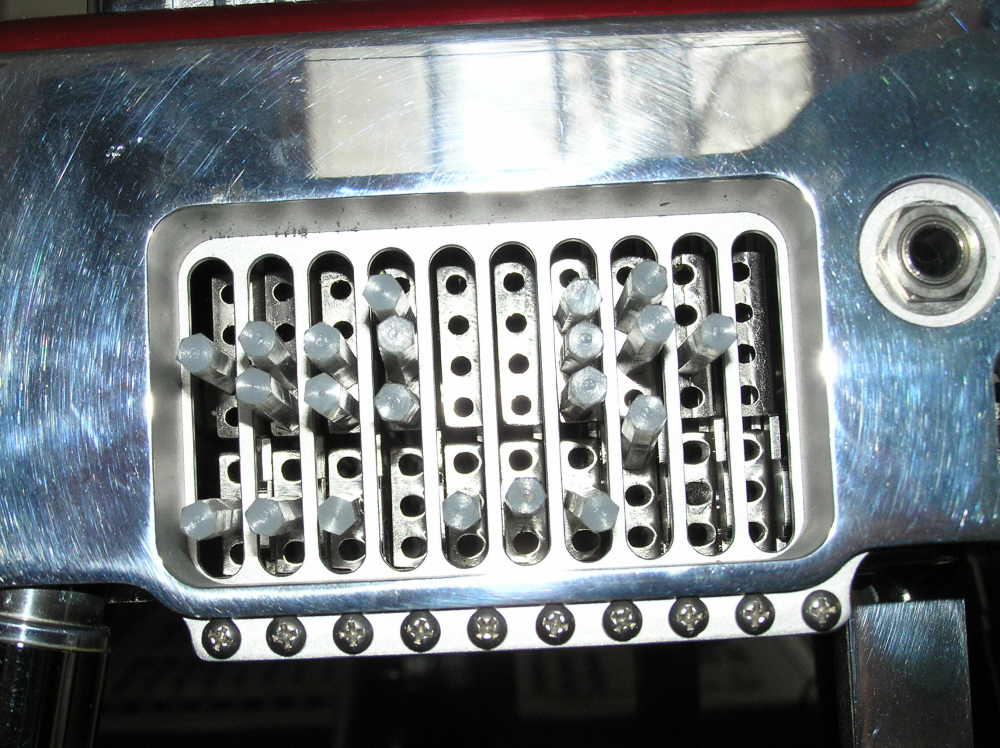
|
